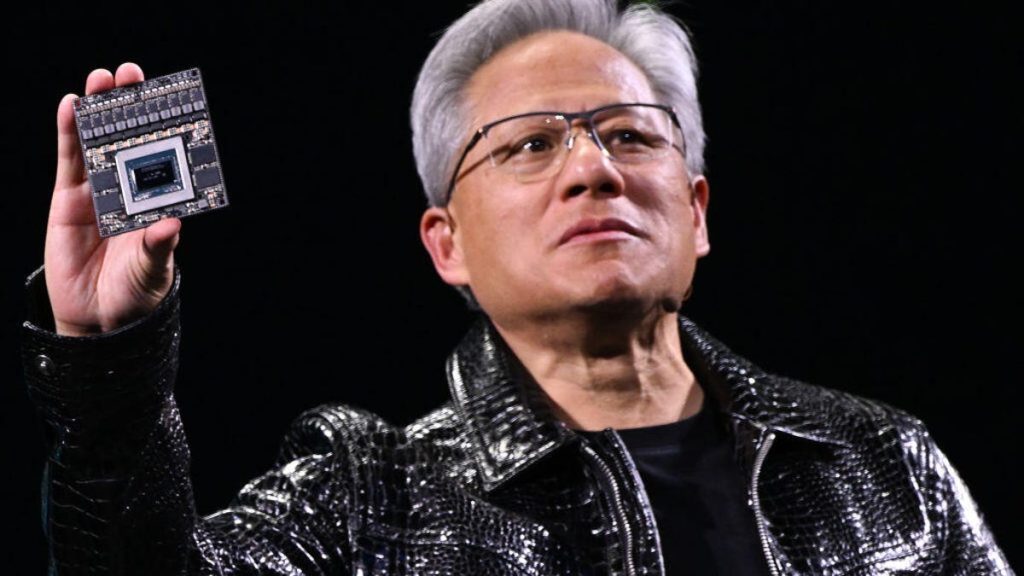Nvidia announced this week it had begun producing chips at factories in Arizona and would build supercomputers in Texas, bringing the manufacturing of the key processing hardware behind generative AI to the US.
The news comes as tariffs announced by President Donald Trump have spurred anxiety about the cost of importing technology and products historically manufactured overseas. Most of the tariffs announced this month have been put on hold after a major stock market decline, and the Trump administration exempted some electronics, including phones and computers, from certain tariffs over the weekend.
Read more: Buy or Wait Guide: How Tariffs Will Change Tech Prices and What to Do Now
Semiconductors might not escape tariffs for long. Trump, posting on his own social media site Truth Social on Sunday, said his administration would be “taking a look at” semiconductors and the electronics supply chain, suggesting more tariff changes ahead.
But this move started long before the president’s latest flurry of trade protections, said Anne Hoecker, head of the global technology practice for the consulting firm Bain & Company.
“The tariffs are moving, and they’re having a big impact, but there is a long-term trend here for a resilient semiconductor supply chain that has gone through multiple administrations,” Hoecker said.
Watch this: Watch Nvidia’s GTC 2025 Keynote: All the Highlights in 16 Minutes
16:26
What Nvidia’s move means for you
While most consumers aren’t buying chips to train and run their own gen AI models, the prices of hardware will affect the ultimate costs of the services we consume. With AI increasingly being wedged into devices like smartphones and software like office tools, an increase in what it costs companies to make those products and services could have significant ripple effects.
Hoecker said price increases from tariffs could happen even despite the onshoring of some semiconductor manufacturing. Just because one computer component is made in the US doesn’t mean the materials that went into it, the equipment used to produce it or the other components around it were protected from tariffs. Some of those increased costs will likely get passed along to consumers.
Creating a more diversified supply chain for chips could lead to higher costs, but it reduces risks to the industry, which is heavily concentrated in Taiwan. “I do think in the long term, consumers benefit from a resilient electronics supply chain,” Hoecker said. “There’s a lot of risk in having too much of a very important component in one location.”
US production of chips and supercomputers ramps up
Nvidia said its Blackwell chips were being produced at TSMC chip plants in Phoenix. The supercomputers, designed to be used in AI-focused data centers, would be built in Houston (in partnership with Foxconn) and Dallas (with Wistron). Nvidia expects manufacturing at the supercomputer plants to ramp up in the next year or so.
“The engines of the world’s AI infrastructure are being built in the United States for the first time,” Nvidia CEO Jensen Huang said in a statement. “Adding American manufacturing helps us better meet the incredible and growing demand for AI chips and supercomputers, strengthens our supply chain and boosts our resiliency.”
Nvidia isn’t the only company with news about chip production in the US this week: AMD also said it will start making processors at TSMC’s Arizona facility.
Efforts to bring semiconductor manufacturing to the US have increased in recent years since President Joe Biden signed the CHIPS Act in 2022. That law provided $53 billion for chipmakers to move production to the states.
The move to bring chip manufacturing to the US is a long-term one, partly because it takes years — and a lot of money up-front — to build a fabrication facility, or “fab.” Compared with the fast-moving development of generative AI, the pace of change in the hardware industry that underlies it is glacial, Hoecker said. “It’s not a speedboat,” she said. “It takes time.”

